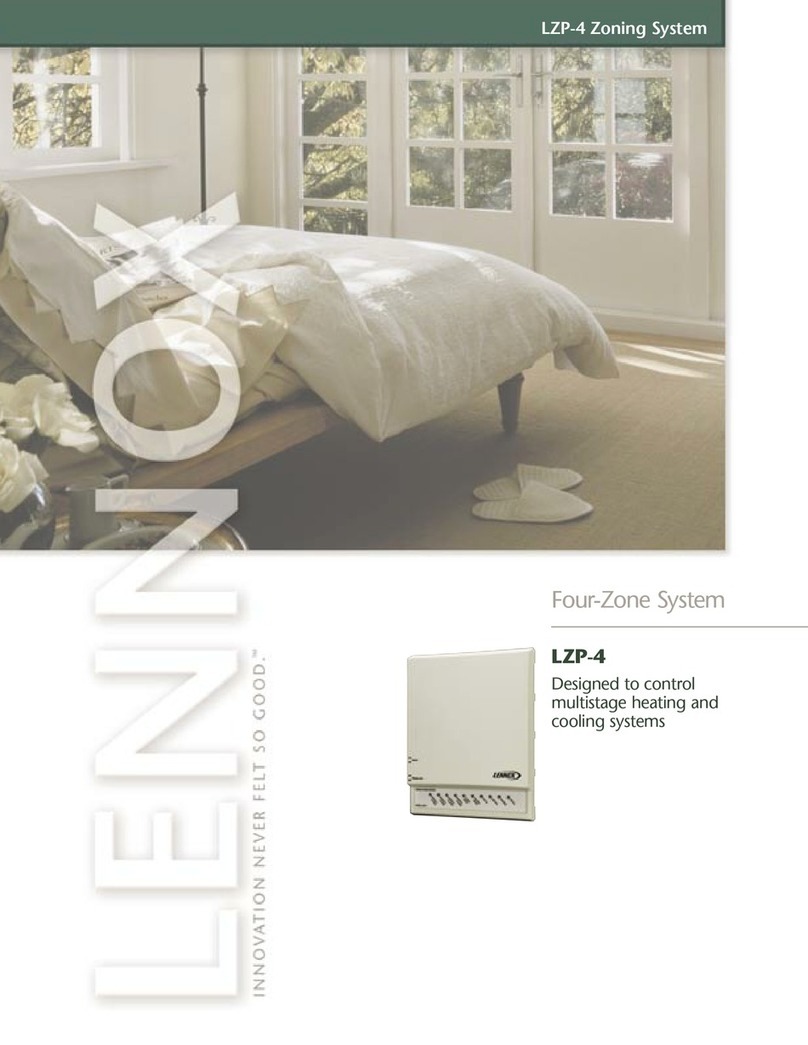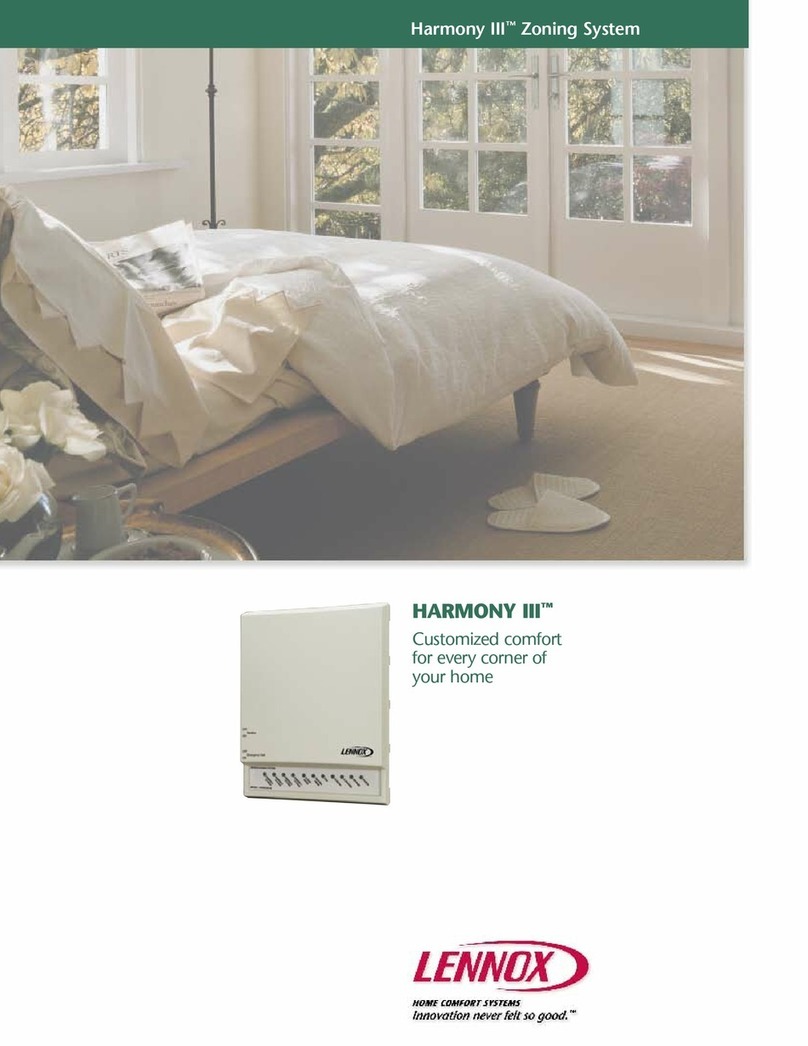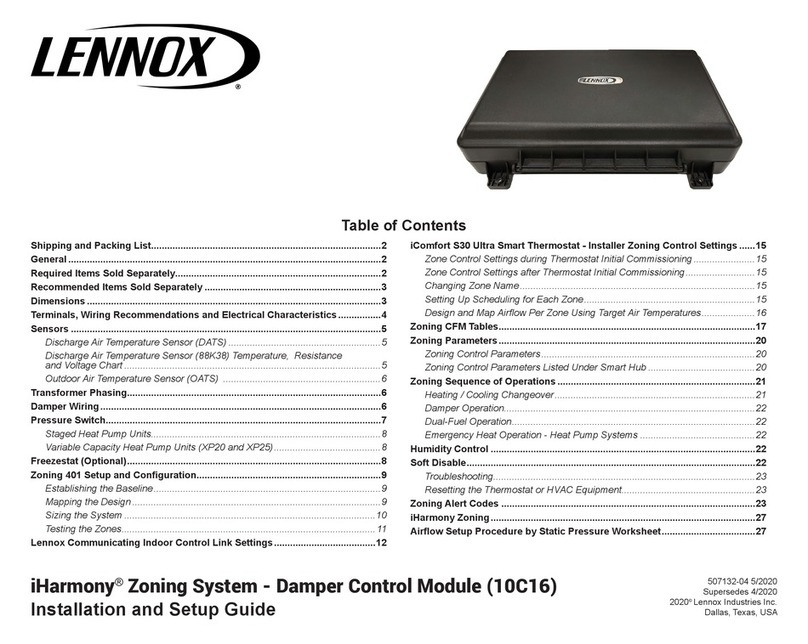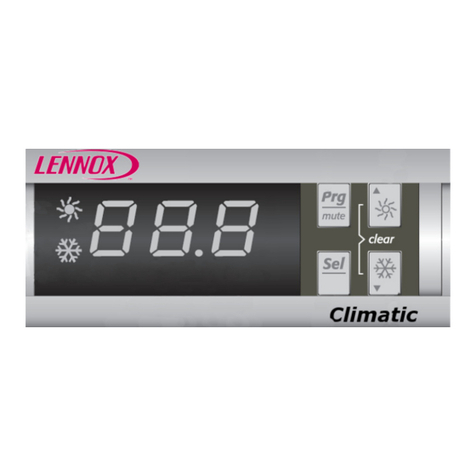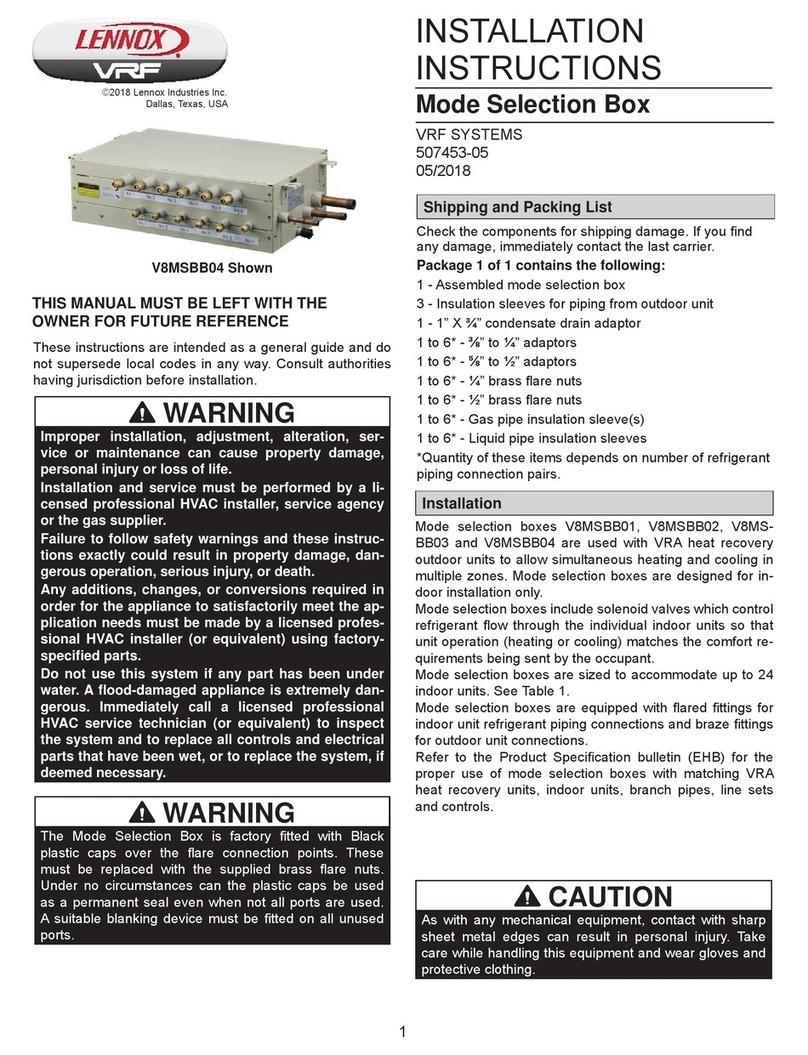
-00 4
CONTROL OF EVAPORATOR PUMPS
Function
To control the flow of refrigerant in the evaporator
Description
There are two possible types of regulation, defined by the variable C2POMPE.
¶If C2POMPE = 0, the CLIMATIC controls one pump or none.
·If C2POMPE = 1, the CLIMATIC controls two pumps in normal / standby mode.
The user configures the C2POMPE parameter through switch 1 (or SW1) of CPU card.
FCase ¶:
The pump POMPE1 is in service if all the following conditions are satisfied:
ðAt least one on / off circuit n is ON (MAARn = 1). *
ðThe remote on / off switch for the machine is ON (MAARD = 1). *
ðThis is not an idle period (INOCCUP = 0). *
ðThe pump has been off for 1 minute or is already in operation.
ðThere is no electrical fault on the pump (DELECP1 = 1).
ðThere is no flow fault on the pump (DSDEB1 = 0).
* Cette condition n'est pas prise en compte si l'option "relance hors gel de la pompe" a été choisie et la
température d'air extérieur est inférieure à 2°C.
* This condition is not taken into account if the "anti-freeze pump start-up" option has been selected and the
outside air temperature is less than 2°C.
POMPE1 is always controlled by the CLIMATIC even if the installation pump is not electrically controlled by
the refrigeration unit.
If the customer controls the pump, he/she must comply with the following procedures:
•Pump start-up 1 minute before confirming the remote on / off switch for the unit.
•Pump off at least 2 minutes after MAARD is switched to 0.
FCas ·:
The pump POMPEk is in service if :
ðAt least one on / off circuit n is ON (MAARn = 1). *
ðThe remote on / off machine is ON (MAARD = 1). *
ðThis is not an idle period (INOCCUP = 0). *
ðPump POMPEk has priority (PRIP = k-1).
ðThe pump has been off for 1 minute or is already in operation.
ðThere is no electrical fault on the pump (DELECPk = 1).
ðThere is no flow fault on the pump (DSDEBk = 0).
* This condition is not taken into account if the "anti-freeze pump start-up" option has been selected and the
outside air temperature is less than 2°C.
The pump priority changes automatically once a week, on Monday at 6 p.m..
In the event of a fault occurring on the pump in service, the unit automatically transfers to the second pump,
on condition that the latter is available.
Note: The CLIMATIC waits 2 minutes before stopping the pumps after a request to stop the machine or
circuits, to avoid any risk of the evaporator freezing.
